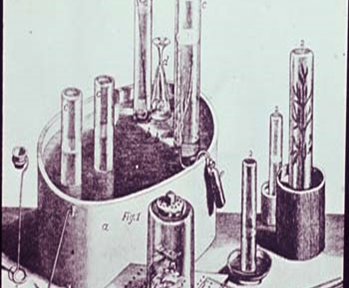AL-MAJUSI ‘ALI IBN AL-‘ABBAS (d. 994). Liber totius medicine necessaria continens quem . . . 1523. Haly Abbas, as he was known in the Latin west, was a native of Ahwaz in southwestern Persia and, in all probability, studied medicine at nearby Jundi-Shapur. He served as court physician to the Buyid ruler ‘Adud ad-Dawlah (d.Continue reading “Notes from the John Martin Rare Book Room, March 2012”
Category Archives: Rare Book Room
Notes from the John Martin Rare Book Room, January, 2012
Nicolaas Tulp (1593-1664). Observationes medicae. 1652. Along with other distinguished anatomists in Holland, Tulp left a rich legacy of anatomical discoveries. His name is current in the eponym”Tulp’s valve” (the ileocecal valve). This book contains the first descriptions of beri-beri and of what is probably diphtheria. Tulp described the condition we know as migraine, theContinue reading “Notes from the John Martin Rare Book Room, January, 2012”
Notes from the John Martin Rare Book Room, November, 2011
JAKOB RÜFF (1500-1558). De conceptu et generatione hominis. Lithotomost, surgeon, obstetrician and playwright, Ruff settled in Zurich about 1525 where he served as town physician and taught at the university. Ruff published his book in both German and Latin in 1554. A comprehensive handbook, the treatise opens with a discussion of conception, development, and nutrition of theContinue reading “Notes from the John Martin Rare Book Room, November, 2011”
Notes from the Rare Book Room, September 2011
ALESSANDRO ACHILLINI (1463-1512). Opera omnia in unum collecta. Venice: Apud Hieronymum Scotum, 1568 Achillini graduated from Bologna in 1484 with his doctorate in both medicine and philosophy. He immediately began his advancement through the academic ranks by teaching philosophy and, after 1495, he also taught medicine. He left Bologna for Padua in 1506 because ofContinue reading “Notes from the Rare Book Room, September 2011”
Notes from the Rare Book Room, July 2011
Frederick Ruysch (1638-1731). Thesaurus anatomicus. 10 pts. 1729-1737. Rusch, a Dutch surgeon, anatomist and professor of anatomy at Leiden and Amsterdam, mastered (and probably invented) a method of minute injection of anatomical structures allowing detailed studies. The recipe for the injected substance has been lost, however. He made many anatomical investigations, including those of theContinue reading “Notes from the Rare Book Room, July 2011”
Notes from the John Martin Rare Book Room, May 2011
History of Medicine Society Presentations and Events, 2011/2012 The presentation series for 2011/2012 has now been published. Talks range from 1) Memories of Oakdale Sanatorium to 2) History of Anesthesia in the Veterans Administration to 3) Medical Quakes in the 18th Century.
John Martin Rare Book Room- News Notes, Feb 2011
Le Boursier, a prominent Parisian midwife, first published the present work in 1759 without illustrations. The success of the book encouraged her to have later editions illustrated by Jean Robert (fl. 1746-1782). The 1769 edition was the first book on midwifery to appear with plates printed in multiple colors. Robert, a pupil of Le Blon,Continue reading “John Martin Rare Book Room- News Notes, Feb 2011”
Notes from the Rare Book Room December, 2010
An Invitation to Explore the Past Visit us before, during or after the holidays and bring a friend. To insure that the room is open email donna-hirst@uiowa.edu or call 335-9154.
Notes from the John Martin Rare Book Room
Nicholas Culpeper (1616–1654) was an English botanist, herbalist, physician, and astrologer. His published books, The English Physician (1652) and the Complete Herbal (1653), contain a rich store of pharmaceutical and herbal knowledge. Culpeper spent the greater part of his life in the English outdoors cataloging hundreds of medicinal herbs. He criticized what he consideredContinue reading “Notes from the John Martin Rare Book Room”
Notes from the Rare Book Room, July 2010
Thursday, September 23, 2010, 5:30-6:30 Scamman, Franklin, M.D. Prof. Dept. of Anesthesiology, University of Iowa The Anesthesia for the First Heart Transplant: Cape Town 1967 Thursday, October 28, 2010, 5:30-6:30 George W. Beran, D.V.M., Ph.D., Prof. Emeritus Vet. Microbiol. & Prev. Med., ISU One Health: Human & Animal Rabies, an issue in human & animalContinue reading “Notes from the Rare Book Room, July 2010”
